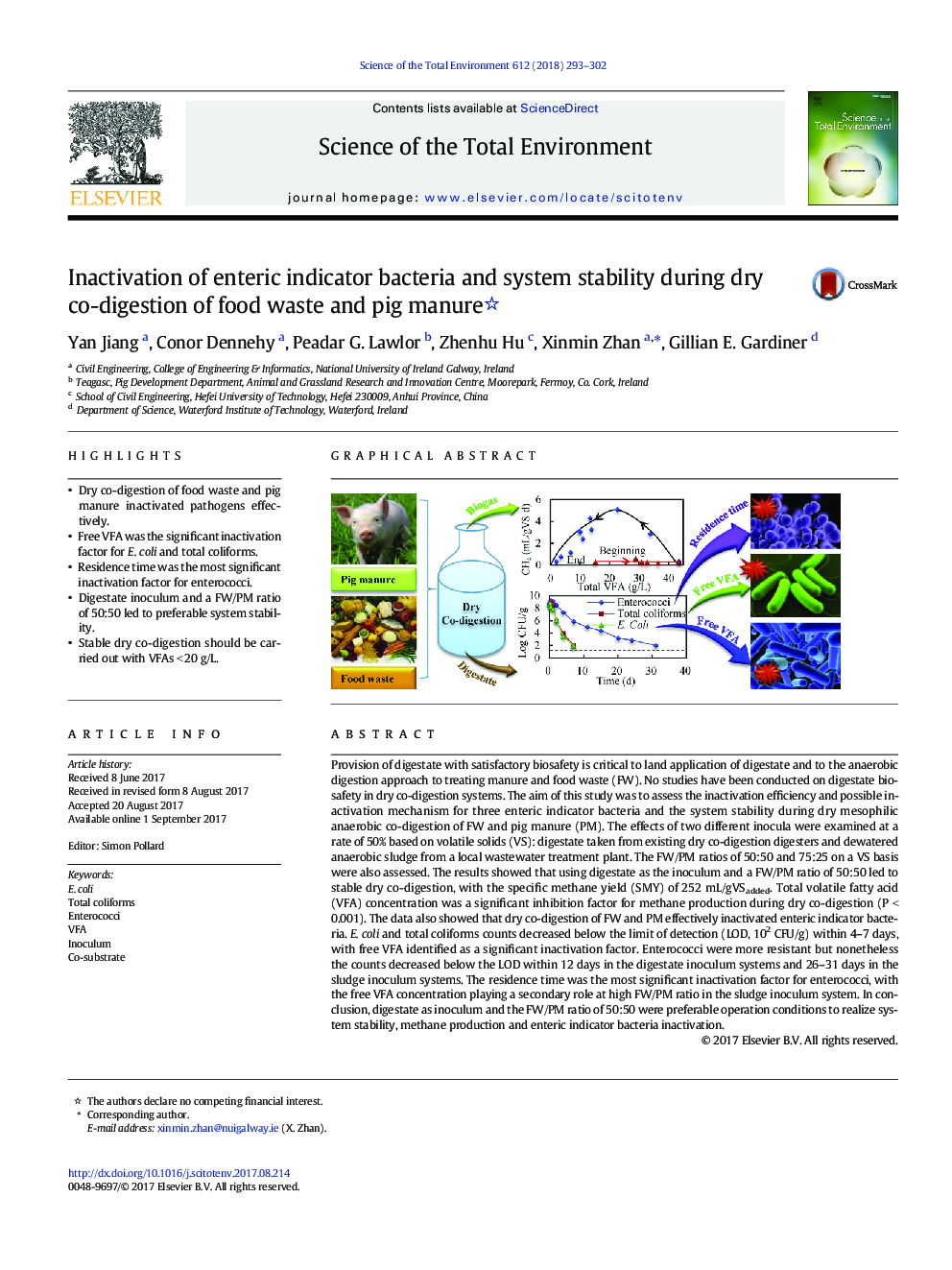| کد مقاله | کد نشریه | سال انتشار | مقاله انگلیسی | نسخه تمام متن |
|---|---|---|---|---|
| 5749885 | 1619691 | 2018 | 10 صفحه PDF | دانلود رایگان |
- Dry co-digestion of food waste and pig manure inactivated pathogens effectively.
- Free VFA was the significant inactivation factor for E. coli and total coliforms.
- Residence time was the most significant inactivation factor for enterococci.
- Digestate inoculum and a FW/PM ratio of 50:50 led to preferable system stability.
- Stable dry co-digestion should be carried out with VFAs <Â 20Â g/L.
Provision of digestate with satisfactory biosafety is critical to land application of digestate and to the anaerobic digestion approach to treating manure and food waste (FW). No studies have been conducted on digestate biosafety in dry co-digestion systems. The aim of this study was to assess the inactivation efficiency and possible inactivation mechanism for three enteric indicator bacteria and the system stability during dry mesophilic anaerobic co-digestion of FW and pig manure (PM). The effects of two different inocula were examined at a rate of 50% based on volatile solids (VS): digestate taken from existing dry co-digestion digesters and dewatered anaerobic sludge from a local wastewater treatment plant. The FW/PM ratios of 50:50 and 75:25 on a VS basis were also assessed. The results showed that using digestate as the inoculum and a FW/PM ratio of 50:50 led to stable dry co-digestion, with the specific methane yield (SMY) of 252Â mL/gVSadded. Total volatile fatty acid (VFA) concentration was a significant inhibition factor for methane production during dry co-digestion (PÂ <Â 0.001). The data also showed that dry co-digestion of FW and PM effectively inactivated enteric indicator bacteria. E. coli and total coliforms counts decreased below the limit of detection (LOD, 102Â CFU/g) within 4-7Â days, with free VFA identified as a significant inactivation factor. Enterococci were more resistant but nonetheless the counts decreased below the LOD within 12Â days in the digestate inoculum systems and 26-31Â days in the sludge inoculum systems. The residence time was the most significant inactivation factor for enterococci, with the free VFA concentration playing a secondary role at high FW/PM ratio in the sludge inoculum system. In conclusion, digestate as inoculum and the FW/PM ratio of 50:50 were preferable operation conditions to realize system stability, methane production and enteric indicator bacteria inactivation.
407
Journal: Science of The Total Environment - Volume 612, 15 January 2018, Pages 293-302
